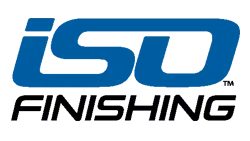Surface Roughness Specifications
How do we know what surface finishes are required, and how should CNC machinists think about surface finishes? Surfaces of parts come in a wide variety from shiny and smooth to rough and matte—they are not machined that way. During the design process, surface roughness symbols indicate what is required and efficiencies can be made during the machining process. That said, irregular textures can still be created as a result of the die or cutting tool instability. Roughness impacts performance of a mechanical component, so precision finishing is crucial. Surface roughness symbols are used to communicate the required surface texture of machined and structural parts and testing is done to ensure those requirement are met.
Roughness includes the finest (shortest wavelength) irregularities of a surface. Roughness (referred to as tool marks) generally results from a production process or material condition. Roughness is measured in a transversal direction to the main grooves. – The mean arithmetical value “Ra” in μm is assumed for roughness measurements.
Surface Texture is the variation in the surface in the form of roughness, waviness, lay, and flaws. In practice, both the words – “Surface Texture” and “Surface Roughness” are used to explain common meaning of surface roughness symbols. Waviness includes the more widely spaced (longer wavelength) deviations of a surface from its nominal shape. Waviness errors are intermediate in wavelength between roughness and form error. It’s the deviation of much larger space that come about from deflection, vibration, heat treatment, etc. Lay refers to the predominant pattern of the surface texture. Ordinarily, lay is determined by the particular production method and geometry used. Flaws are defects, or irregularities, that occur more or less at random over the surface. These defects can be such things as cracks, blow holes, ridges, scratches etc.
Surface Roughness Symbols

Surface texture obtained by any manufacturing process (e.g., turning, grinding, plating, bending)

Symbol indicating a surface the requires a removal process and allowance indicated. Surface texture obtained by material removal by machining Operation (e.g., turning, drilling, Milling, slotting)

Symbol indicating a surface where removal processes are prohibited.

Symbol indicating a grain direction (lay).

Examples indicating the Ra upper limit.

Example positions of Symbols
To learn more about Surface Roughness Symbols, click here.

